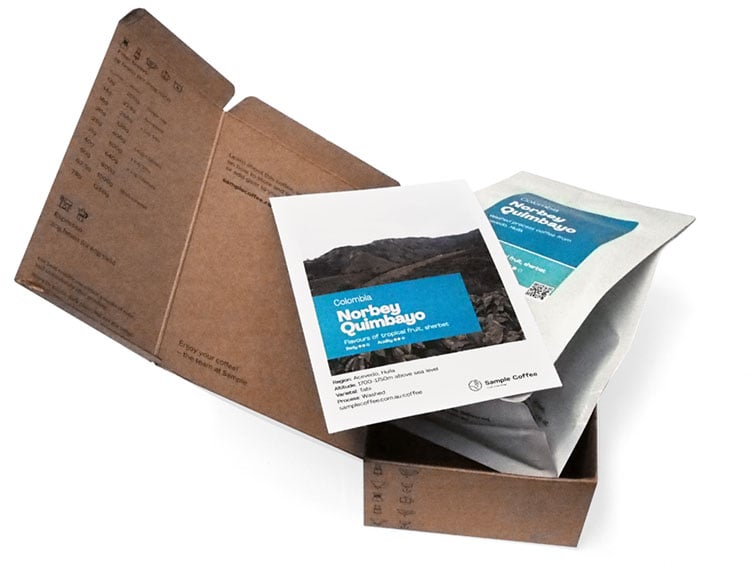Bolivia
Lucio Mamani
Lucio’s farm is 13 hectares in size and grows at 1,600–1,750 metres above sea level. Around four hectares are planted with Caturra, Catuaí and Typica variety coffee trees.
These grow alongside mandarins, oranges, potatoes, and apples that Lucio sells to supplement his income outside the coffee season.
At their prime, Lucio and his children (who own neighbouring farms) enjoyed many good years in coffee production and produced around 120 bags of coffee a year, which they exported to specialty buyers in the USA and Europe.
Unfortunately, in 2012, their farm (like most in Bolivia) was hit by leaf rust, and they didn’t know how to combat the disease. Devastated and desperate, the family considered leaving their farm behind, but coffee was all that they knew. Caturra – the varietal in the crop we’re sharing today — has particularly bad resistance to leaf rust.
They persisted for a couple of years, producing low yields and planting fruit trees to supplement their income.
Luckily in 2015, they were approached by the Rodriguez family of Agricafe, who invited them to participate in a producer training program called Sol de la Mañana.
Agricafe is a Bolivian family business owned by Pedro Rodriguez and his daughter Daniela and son Pedro Pablo. The trio’s mission is to build the production of, and market for, Bolivian specialty coffee. To do this, they have invested efforts and funding across the entire specialty coffee production chain, including buying coffee from hundreds of local farmers, establishing state-of-the-art wet and dry mills, launching producer training programs, and planting new coffee farms across the regions of Caranavi and Samaipata.
Over the last decade, Agricafe has been working to try and save the Bolivian coffee industry. Despite its international recognition and highly sought after coffees, the production of coffee across Bolivia has decreased dramatically and has been at risk of completely disappearing. A combination of ageing coffee plantations, traditional and very unsophisticated farming techniques and diseases such as leaf rust have resulted in significantly reduced yields, and this, combined with the proliferation of the competing coca industry (used for cocaine), has seen coffee production more than halve.
To try to save coffee production in Bolivia and build a more sustainable future for it, the Rodriguez family started a project called Sol de la Mañana (which translates to ‘morning sun’).
This particular lot from Lucio and his family was carefully hand-picked and processed on the same day at the Buena Vista washing station. This meticulously run mill is owned by Agricafe, who painstakingly process each of the exceptional specialty lots they receive separately to allow for full traceability back to the individual farmer or settlement.
Evenings at the mill are always bustling as arrivals of fresh cherries begin in the late afternoon after the day’s picking, and continue deep into the night. It is widely known around Caranavi that only perfectly ripe cherries will be accepted by this mill and all lots are inspected on arrival prior to processing. In an arrangement somewhat unique to this mill, many farmers use taxis to deliver coffee, and by 7 pm a long line of taxis forms along the road leading to the mill.
After being inspected and weighed, the coffee is carefully sorted by weight using water, and floaters removed.
Sourcing and ingredients
100% Caturra coffee beans, provided by Melbourne Coffee Merchants and roasted by us on Gadigal land / Sydney.
Country grade: Unknown ?
Packaging
Bag: ABA Certified home compostable
Label: Recyclable
Valve (on bags larger than 250g): General waste
Coffee ordered online is shipped in a recyclable cardboard box
Brewing this coffee
We recommend brewing this coffee 15–49 days post-roast. If pre-ground, brew as soon as possible. Our advice on storing coffee.
1:3
dose:yield
ratio
To brew on espresso, we recommend using 20g of beans (dose) to get 60g of espresso out (yield), during 24-28 seconds.
1:16.7
beans:water
ratio
To brew in infusion/fed brewers (V60, Chemex) use a ratio of 1:16.7 ratio of beans:water.
1:14.3
beans:water
ratio
To brew in immersion brewers (plunger, AeroPress, Kalita, batch brewer) we recommend using a 1:14.3 ratio of beans:water
1:12
beans:water
ratio
To brew as cold brew we recommend using a 1:12 ratio of beans:water
Varietals
Caturra varietal
Caturra is a natural mutation of Bourbon that was originally discovered in Brazil in 1937, considered to be the first naturally occurring mutation ever discovered.
The location
Coffee from Bolivia
Historically, Bolivia has not been as popular as its neighbouring countries in terms of exports, but coffee has been present since the 19th century.
Farm processes
Washed process
Machines are used to remove the flesh from the coffee cherry before being fermented in water, washed again, and finally sun dried. This process tends to result in more distinct, cleaner flavours.

Subscribe to a world of coffee
Discover a new single origin coffee from Sample every 1-5 weeks with no delivery fees.
No up-front purchase, and you can pause, cancel, or change plans at any time.
Available to order online this week:

Kenya Gathaithi
Flavours of burnt toffee, orange, cola
Body Acidity
Washed SL-28, SL-34, Ruiru 11, Batian
November 2023 harvest
Roasted omni for filter and espresso
Kenya Gathaithi online
Ethiopia Kecho Anderacha
Flavours of candied lemon, white peach, bergamot
Body Acidity
Washed Ethiopian Heirloom
November 2023 harvest
Roasted omni for filter and espresso
Ethiopia Kecho Anderacha online
Colombia La Serrania Decaf
Flavours of honey and blackberry
Body Acidity
Washed + EA Natural Decaf Caturra, Castillo, V.Colombia
Roasted omni for filter and espresso
Colombia La Serrania Decaf online
Colombia Canta Ranas
Flavours of yellow peach, orange juice, raspberry, rosehip
Body Acidity
Washed Chiroso
May 2024 harvest
Roasted omni for filter and espresso
Colombia Canta Ranas online